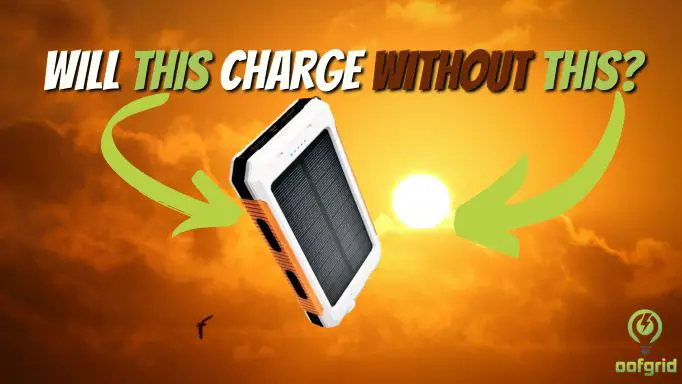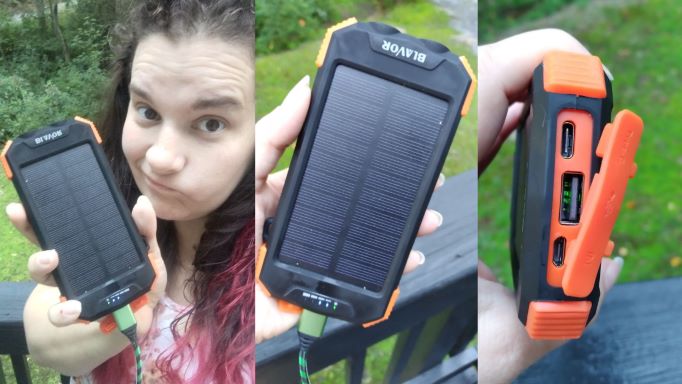On long cold winter nights, the reassuring hum of your gas furnace is a real comfort. Many gas furnace owners feel confident that they have a reliable source of warmth, even in emergency situations.
But if your gas furnace has an electric start, what do you do when the power goes out?
In this article, we take a look at your options for backup electrical power for your gas furnace so you can prepare your household with a backup option that will keep you confident that you won’t lose heat in a power cut.
Contents
Can my gas furnace operate without using electricity?
In a power outage, being able to use your pressurized natural gas supply would make all the difference in the world, but you need to know that despite being gas-fuelled, your furnace is reliant on electricity to power key components that enable it to operate safely. You will need electrical power for:
- Electronic ignition: Modern gas furnaces are ignited using an electronic ignition system rather than the old-fashioned pilot light. The electrical ignition can take place by using a high voltage electrical spark to ignite a gas-fueled pilot that then ignites the boiler, or by powering a high resistance circuit to generate heat that then ignites your gas burners.
- Circuit boards: There are a number of electronic circuits that regulate the performance of the furnace and provide thermostatic control.
- Blower motors: The blower consists of electrically powered fans that move the furnace’s heat into your ducts and ensure that exhaust gases leave via the flue.
Because these electrical components are integral to the functioning of the furnace, without electricity, the whole unit simply will not work, and attempts to start the furnace will be prevented by its safety mechanisms.
Electricity is not only needed to start the gas furnace but also to keep it running; meaning an alternative power source would need to supply power for as long as the furnace is used.
How much electricity does a gas furnace use?
A gas furnace with forced air typically uses between 600 and 800 watts of electricity. The starting wattage can be as much as 2500 watts. The power requirements of furnaces may vary depending on their starting mechanism. Furnaces with glow plugs that use heat to start the gas burners will consume more electricity.
What are the options for power backup for a furnace?
The two main options for supplying backup electrical power to run your furnace during an outage are:
- Battery backup for gas furnace
You may have a battery backup device for your sump pump, phone line, or other household appliances. Batteries, after all, do not need fuel and are pretty much hassle-free.
But with a furnace, a powerbank or battery solution may get a little bit tricky, especially if the power to the furnace is via direct line and you have no plug.
What can be achieved with power banks and battery power sources all comes down to the specifications of your boiler and a likely technical workaround that will require an electrician’s input.
Using a battery with a gas furnace is not convenient as you need to be able to generate enough power to start and run the furnace.
The battery output would have to achieve well in excess of 1000 starting watts and perhaps slightly less for running, which is unlikely to be possible with a standard Uninterruptible Power Supply (UPS).
A deep cycle marine battery with an inverter may be able to kick-start a smaller furnace but again the power would not last long, making the battery a rather insecure backup for a mains gas furnace.
If you are serious about battery backup for your furnace, you may need to invest in a battery backup system, that stores energy from your electricity supply or solar panels and keeps it on hand for emergencies or as an alternate power source.
They are designed to fully replace your power supply, becoming the primary energy source for your home during an outage. Companies like Tesla produce these energy storage systems which are integrated into your home and can cost tens of thousands of dollars.
- Generator backup for gas furnace
A portable generator is the better option for reliable backup power for your household’s furnace. This is about protection rather than practicality and convenience.
A generator will be able to generate adequate wattage to start and run a gas furnace for as long as you need it.
To ensure that your generator is properly matched to the furnace, you will need to know the exact wattage of your particular furnace as well as wattages for any other equipment or appliances the generator will be running alongside the furnace.
If too many items are connected, you may overload the generator and have too little power to maintain your heating. Look for a generator with a wattage that exceeds your maximum requirements to ensure that it will run optimally.
Though a portable generator is more than adequate to run your furnace, the location of the generator while it is working will require careful thought. Your generator needs good ventilation, just like your gas furnace.
If the generator is in an enclosed space next to your furnace it will lead to the build-up of deadly carbon monoxide. Place the generator where it will be fully ventilated and run a high-quality power cord to the furnace.
If your furnace is hard-wired, you will need assistance from a qualified electrician to convert the wiring to allow the attachment of a plug that can be connected to an extension cable or directly to the generator.
Rounding up
Though batteries seem like a very convenient solution for keeping your gas furnace running during an outage, a battery or power-bank backup for a gas furnace simply won’t cut it unless it’s of an extremely high specification.
Portable generators are recognized as the go-to for backup power for a furnace because they can consistently and reliably generate and maintain the electrical power needed to keep your furnace going.
The wattage required by most furnaces is easily accommodated by the capacity of a wide range of cost-effective portable generators.






